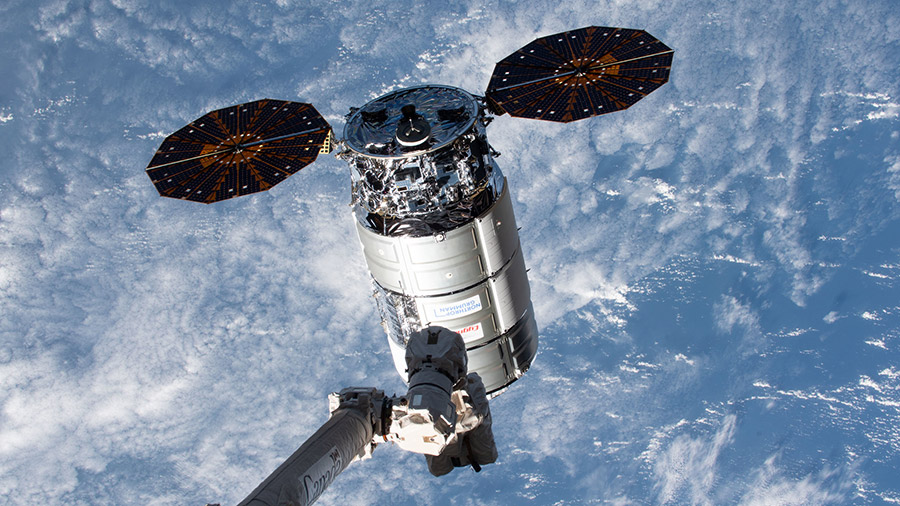
A U.S. cargo craft is being readied for its departure on Friday from the International Space Station after a five-and-a-half-month resupply mission. In the meantime, the nine orbital residents comprising the Expedition 71 and Starliner crews studied space biology and 3D printing while servicing a pair of spacesuits on Thursday.
Northrop Grumman’s Cygnus resupply ship will end its stay at the orbital outpost at 7 a.m. EDT on Friday. Robotics controllers will command the Canadarm2 robotic arm to remove Cygnus from the Unity module then release it into orbit where it will descend into the Earth’s atmosphere above the South Pacific.
Watch Cygnus’s departure live beginning at 6:30 a.m. Friday on the NASA+ streaming service via the web or the NASA app. Departure coverage also will air live on NASA Television, YouTube, and on the agency’s website. Learn how to stream NASA TV through a variety of platforms including social media.
NASA Flight Engineers Tracy C. Dyson and Matthew Dominick finished packing Cygnus with trash and obsolete gear on Thursday. Afterward, the duo exited Cygnus, closed the hatch, and prepared the spacecraft for its depressurization and separation early Friday. Cygnus arrived at the orbital outpost on Feb. 1 replenishing the crew with over 8,200 pounds of science experiments and crew supplies.
Advanced biology research also was underway aboard the orbiting lab on Thursday with a pair of astronauts exploring how living in space affects the human body and mind. NASA Flight Engineer Mike Barratt started his day drawing his blood samples and stowing them in a science freezer for future analysis. Next, he took a cognition test measuring space-caused changes in brain structure and function. NASA astronaut and Boeing Starliner Pilot Suni Williams extracted DNA to identify microbe samples collected from station water systems. Results from the genetic biotechnology experiment may improve ways to keep crews healthy and spacecraft systems clean on future missions.
Barratt also assisted Starliner Commander Butch Wilmore from NASA who spent all day servicing a pair of spacesuits in the Quest airlock. The duo cleaned the suits’ cooling loops and checked the communication systems ahead of a spacewalk planned for July 29.
NASA Flight Engineer Jeanette Epps worked Thursday morning in the Kibo laboratory module replacing carbon dioxide bottles that supply payload racks inside Kibo. During the afternoon, Epps worked inside the Tranquility module replacing life support components and servicing orbital plumbing gear.
Working from the Roscosmos segment of the orbital outpost, cosmonaut Nikolai Chub started the morning studying ways future crews might pilot spacecraft and robots on planetary missions. In the afternoon, Chub powered on the Nauka science module’s 3D printer and continued testing its ability to manufacture space hardware on demand. Flight Engineer Alexander Grebenkin worked throughout the day on orbital plumbing while Commander Oleg Kononenko deconfigured scientific gear to access Zvezda service module panels for maintenance and cleaning.
Learn more about station activities by following the space station blog, @space_station and @ISS_Research on X, as well as the ISS Facebook and ISS Instagram accounts.
Get weekly video highlights at: https://roundupreads.jsc.nasa.gov/videoupdate/
Get the latest from NASA delivered every week. Subscribe here: www.nasa.gov/subscribe
